Simultaneously Low Rank and Group Sparse Decomposition for Rolling Bearing Fault Diagnosis
Abstract
1. Introduction
- (1)
- We explore the intrinsic structures for the Hankel matrix of the fault feature pattern, indicating that it has the SLRGS property. To the best of our knowledge, it is the first time that the Hankel matrix of the vibration fault signal is modeled as a simultaneously low rank and group sparse matrix estimation problem.
- (2)
- A novel SLRGSD framework is proposed for bearing fault diagnosis. The new framework is formulated to promote the SLRGS property. Moreover, the periodic impulses and interference components are split based on the PI index in the low rank domain. The PI is proved to have better fault feature discrimination ability than the PMI.
- (3)
- The essential of the SLRGS property for improving the performance of SLRGSD method is verified by the numerical analysis and bearing fault diagnosis experiment. The results indicate that the proposed SLRGSD method can effectively enhance the fault feature.
2. Review of Current SVD Methods for Bearing Fault Diagnosis
- Step 1:
- Construction of the Hankel matrix
- Step 2:
- Hankel matrix decomposition
- Step 3:
- Reconstruction for feature extraction
3. Proposed SLRGSD Framework for Bearing Fault Diagnosis
3.1. DET and Inverse DET
3.2. SLRGSD Model
- Low-Rank Property: The low rank property for the Hankel matrix of the bearing fault signal has been demonstrated by several studies such as Ref. [33,34,35,36,37,38,39,40,41,42]. We illustrate this property from Figure 3a, which provides an intuitive explanation about the low-rank property of the fault feature. Figure 3a demonstrates the singular values distribution of the Hankel matrix of the fault feature. It can be found that the signals with different characteristics can be projected into different spaces after SVD operation. In addition, the valuable SCs concentrate in a few large singular subspaces [41]. To this end, the Hankel matrix of the fault feature can be primarily estimated through the low rank nuclear norm constraint.
- Group sparse property: Another assumption believes that the periodic fault feature has the group sparse property, which were confirmed by the researches from Ref. [46,47,48]. On this basis, several denoising frameworks were designed for bearing fault feature detection. It is logical for us to assert that the Hankel matrix of the fault feature also owns the group sparse property if we make an analogy analysis. The colormap for the Hankel matrix of the fault feature is shown in Figure 3b. We can find that the Hankel matrix of the fault feature pattern exhibits an evident periodicity. There are periodic “bar code” in the colormap. While outside of the “bar code”, all elements can be regarded as zero. Therefore, it is reasonable for us to assume that the Hankel matrix of the fault feature has the group sparsity. This motivates us to pose a group sparsity cognizant estimator for the Hankel matrix, which will expect to realize a more accurate and robust estimation result.
3.3. Proximal Gradient Descends for Solving SLRGSD
| Algorithm 1 Proximal gradient descends for solving SLRGSD. |
| Require: Hankel matrix , regularization parameter and maximum iteration |
| 1. . |
| 2. for do |
| 3. . |
| 4. update through Equation (14). |
| 5. update through Equation (19). |
| 6. until convergence |
| 7. end for |
| 8. Obtain the estimated matrix . |
3.4. Fault Diagnosis Procedure of Rolling Bearing Using SLRGSD
4. Numerical Analysis
4.1. Simulation Setup
4.2. The PI Index Assessment
4.3. Regularization Parameters Configuration Strategy
4.4. The Role of SLRGS Property
4.5. SLRGSD Versus Other Methods
- RSVD: RSVD method decomposes the Hankel matrix of the original signal into several SCs via SVD operation. Then the information of periodic impulses in each SC is measured through the PMI indicator. When PMI > 1, the relevant SCs was selected to reconstruct the fault feature signal. Hence, RSVD method is developed based on the low rank property for Hankel matrix of fault feature signal. In this research, it should be noted that the reconstructed fault feature is determined by the SC with maximum PMI as the fault feature is contaminate by the heavy noise.
- PO-VMD: VMD method has attracted wide attention for extracting the bearing fault feature. The fundamental ideal is to decompose the raw input fault signals into a serial of sparse discrete modes. The sensitive sub-components can be affirmed based on tailored statistical indicators such as the kurtosis, the entropy, etc. The parameters such as the mode frequency bandwidth control parameter and the number of modes play a significant influence to the performance of the decomposition results. Like the method proposed in Ref. [57], the moth-flame optimization (MFO) algorithm is employed to optimize the key parameters of VMD to gain a better fault feature detection result. Meanwhile, we adopt the PI index to construct the fitness function. The sensitive sub-component can be located by the AIHN index.
5. Experimental Verification
5.1. Inner and Outer Race Fault Diagnosis
5.1.1. Inner Race Fault Diagnosis
5.1.2. Outer Race Fault Diagnosis
5.2. Application to Wind Turbine Bearing Fault Diagnosis
6. Conclusions
Author Contributions
Funding
Conflicts of Interest
References
- Wang, L.; Shao, Y. Fault feature extraction of rotating machinery using a reweighted complete ensemble empirical mode decomposition with adaptive noise and demodulation analysis. Mech. Syst. Signal Process. 2020, 138, 106545. [Google Scholar] [CrossRef]
- Jiao, J.; Zhao, M.; Lin, J.; Ding, C. Deep coupled dense convolutional network with complementary data for intelligent fault diagnosis. IEEE Trans. Ind. Electron. 2019, 66, 9858–9867. [Google Scholar] [CrossRef]
- Huang, W.; Li, N.; Selesnick, I.; Shi, J.; Wang, J.; Mao, L.; Jiang, X.X.; Zhu, Z. Non-convex group sparsity signal decomposition via convex optimization for bearing fault diagnosis. IEEE Trans. Instrum. Meas. 2019, 69, 4863–4872. [Google Scholar] [CrossRef]
- Liu, Z.; Zhang, L.; Carrasco, J. Vibration analysis for large-scale wind turbine blade bearing fault detection with an empirical wavelet thresholding method. Renew. Energy 2020, 146, 99–110. [Google Scholar] [CrossRef]
- Hebda-Sobkowicz, J.; Zimroz, R.; Pitera, M.; Wyłomańska, A. Informative frequency band selection in the presence of non-Gaussian noise–a novel approach based on the conditional variance statistic with application to bearing fault diagnosis. Mech. Syst. Signal Process. 2020, 145, 106971. [Google Scholar] [CrossRef]
- Hasan, M.J.; Islam, M.M.M.; Kim, J.M. Acoustic spectral imaging and transfer learning for reliable bearing fault diagnosis under variable speed conditions. Measurement 2019, 138, 620–631. [Google Scholar] [CrossRef]
- Mo, Z.; Wang, J.; Zhang, H.; Miao, Q. Weighted cyclic harmonic-to-noise ratio for rolling element bearing fault diagnosis. IEEE Trans. Instrum. Meas. 2019, 69, 432–442. [Google Scholar] [CrossRef]
- Gu, X.; Yang, S.; Liu, Y.; Hao, R.; Liu, Z. Multi-objective informative frequency band selection based on negentropy-induced grey wolf optimizer for fault diagnosis of rolling element bearings. Sensors 2020, 20, 1845. [Google Scholar] [CrossRef]
- Zheng, K.; Li, T.; Su, Z.; Wen, J.; Zhang, B.; Zhang, Y. Faults diagnosis of rolling bearings based on shift invariant K-singular value decomposition with sensitive atom nonlocal means enhancement. Measurement 2019, 135, 836–851. [Google Scholar] [CrossRef]
- Miao, Y.; Zhao, M.; Makis, V.; Lin, J. Optimal swarm decomposition with whale optimization algorithm for weak feature extraction from multicomponent modulation signal. Mech. Syst. Signal Process. 2019, 122, 673–691. [Google Scholar] [CrossRef]
- Antoni, J.; Xin, G.; Hamzaoui, N. Fast computation of the spectral correlation. Mech. Syst. Signal Process. 2017, 92, 248–277. [Google Scholar] [CrossRef]
- Lin, H.; Wu, F.; He, G. Rolling bearing fault diagnosis using impulse feature enhancement and nonconvex regularization. Mech. Syst. Signal Process. 2020, 142, 106790. [Google Scholar] [CrossRef]
- Leite, V.C.M.; da Silva, J.G.B.; Veloso, G.F.C.; da Silva, L.E.B.; Lambert-Torres, G.; Bonaldi, E.L.; de Oliveira, L.E.D.L. Detection of localized bearing faults in induction machines by spectral kurtosis and envelope analysis of stator current. IEEE Trans. Ind. Electron. 2014, 62, 1855–1865. [Google Scholar] [CrossRef]
- Udmale, S.S.; Singh, S.K. Application of spectral kurtosis and improved extreme learning machine for bearing fault classification. IEEE Trans. Instrum. Meas. 2019, 68, 4222–4233. [Google Scholar] [CrossRef]
- Xu, Y.; Tian, W.; Zhang, K.; Ma, C. Application of an enhanced fast kurtogram based on empirical wavelet transform for bearing fault diagnosis. Meas. Sci. Technol. 2019, 30, 035001. [Google Scholar] [CrossRef]
- Wang, Y.; Peter, W.T.; Tang, B.; Qin, Y.; Deng, L.; Huang, T. Kurtogram manifold learning and its application to rolling bearing weak signal detection. Measurement 2018, 127, 533–545. [Google Scholar] [CrossRef]
- Strömbergsson, D.; Marklund, P.; Berglund, K.; Larsson, P.E. Bearing monitoring in the wind turbine drivetrain: A comparative study of the FFT and wavelet transforms. Renew. Energy 2020, 2323, 1381–1393. [Google Scholar] [CrossRef]
- Tao, X.; Ren, C.; Wu, Y.; Li, Q.; Guo, W.; Liu, R.; He, Q.; Zou, J. Bearings fault detection using wavelet transform and generalized Gaussian density modeling. Measurement 2020, 155, 107557. [Google Scholar] [CrossRef]
- Lu, Y.; Xie, R.; Liang, S.Y. Detection of weak fault using sparse empirical wavelet transform for cyclic fault. Int. J. Adv. Manuf. Technol. 2018, 99, 1195–1201. [Google Scholar] [CrossRef]
- Wang, D.; Zhao, Y.; Yi, C.; Tsui, K.L.; Lin, J. Sparsity guided empirical wavelet transform for fault diagnosis of rolling element bearings. Mech. Syst. Signal Process. 2018, 101, 292–308. [Google Scholar] [CrossRef]
- Li, J.; Wang, H.; Song, L.; Cui, L. A novel feature extraction method for roller bearing using sparse decomposition based on self-Adaptive complete dictionary. Measurement 2019, 148, 106934. [Google Scholar] [CrossRef]
- Guo, W.; Peter, W.T. A novel signal compression method based on optimal ensemble empirical mode decomposition for bearing vibration signals. J. Sound Vib. 2013, 332, 423–441. [Google Scholar] [CrossRef]
- Hoseinzadeh, M.S.; Khadem, S.E.; Sadooghi, M.S. Quantitative diagnosis for bearing faults by improving ensemble empirical mode decomposition. ISA Trans. 2018, 83, 261–275. [Google Scholar] [CrossRef]
- Imaouchen, Y.; Kedadouche, M.; Alkama, R.; Thomas, M. A frequency-weighted energy operator and complementary ensemble empirical mode decomposition for bearing fault detection. Mech. Syst. Signal Process. 2017, 82, 103–116. [Google Scholar] [CrossRef]
- Wang, L.; Liu, Z.; Miao, Q.; Zhang, X. Complete ensemble local mean decomposition with adaptive noise and its application to fault diagnosis for rolling bearings. Mech. Syst. Signal Process. 2018, 106, 24–39. [Google Scholar] [CrossRef]
- Li, X.; Ma, J.; Wang, X.; Wu, J.; Li, Z. An improved local mean decomposition method based on improved composite interpolation envelope and its application in bearing fault feature extraction. ISA Trans. 2020, 97, 365–383. [Google Scholar] [CrossRef] [PubMed]
- Sharma, V.; Parey, A. Extraction of weak fault transients using variational mode decomposition for fault diagnosis of gearbox under varying speed. Eng. Fail. Anal. 2020, 107, 104204. [Google Scholar] [CrossRef]
- Wang, X.B.; Yang, Z.X.; Yan, X.A. Novel particle swarm optimization-based variational mode decomposition method for the fault diagnosis of complex rotating machinery. IEEE-ASME Trans. Mechatron. 2017, 2323, 68–79. [Google Scholar] [CrossRef]
- Huang, Y.; Huang, C.; Ding, J.; Liu, Z. Fault diagnosis on railway vehicle bearing based on fast extended singular value decomposition packet. Measurement 2020, 152, 107277. [Google Scholar] [CrossRef]
- Jiang, H.; Chen, J.; Dong, G.; Liu, T.; Chen, G. Study on Hankel matrix-based SVD and its application in rolling element bearing fault diagnosis. Mech. Syst. Signal Process. 2015, 52, 338–359. [Google Scholar] [CrossRef]
- Banerjee, M.; Pal, N.R. Feature selection with SVD entropy: Some modification and extension. Inform. Sci. 2014, 264, 118–134. [Google Scholar] [CrossRef]
- Zhang, H.; Chen, X.; Zhang, X.; Ye, B.; Wang, X. Aero-engine bearing fault detection: A clustering low-rank approach. Mech. Syst. Signal Process. 2020, 138, 106529. [Google Scholar] [CrossRef]
- Zhao, X.; Ye, B. Selection of effective singular values using difference spectrum and its application to fault diagnosis of headstock. Mech. Syst. Signal Process. 2011, 2525, 1617–1631. [Google Scholar] [CrossRef]
- Qiao, Z.; Pan, Z. SVD principle analysis and fault diagnosis for bearings based on the correlation coefficient. Meas. Sci. Technol. 2015, 2626, 085014. [Google Scholar] [CrossRef]
- Zhang, S.; Lu, S.; He, Q.; Kong, F. Time-varying singular value decomposition for periodic transient identification in bearing fault diagnosis. J. Sound Vib. 2016, 379, 213–231. [Google Scholar] [CrossRef]
- Xu, J.; Tong, S.; Cong, F.; Chen, J. Slip hankel matrix series-based singular value decomposition and its application for fault feature extraction. IET Sci. Meas. Technol. 2017, 1111, 464–472. [Google Scholar] [CrossRef]
- Golafshan, R.; Sanliturk, K.Y. SVD and Hankel matrix based de-noising approach for ball bearing fault detection and its assessment using artificial faults. Mech. Syst. Signal Process. 2016, 70, 36–50. [Google Scholar] [CrossRef]
- Li, H.; Liu, T.; Wu, X.; Chen, Q. Research on bearing fault feature extraction based on singular value decomposition and optimized frequency band entropy. Mech. Syst. Signal Process. 2019, 118, 477–502. [Google Scholar] [CrossRef]
- Li, L.; Cui, Y.; Chen, R.; Liu, X. Optimal SES selection based on SVD and its application to incipient bearing fault diagnosis. Shock Vib. 2018, 1–13. [Google Scholar] [CrossRef]
- Zheng, K.; Li, T.; Zhang, B.; Zhang, Y.; Luo, J.; Zhou, X. Incipient fault feature extraction of rolling bearings using autocorrelation function impulse harmonic to noise ratio index based SVD and teager energy operator. Appl. Sci. 2017, 77, 1117. [Google Scholar] [CrossRef]
- Zhao, M.; Jia, X. A novel strategy for signal denoising using reweighted SVD and its applications to weak fault feature enhancement of rotating machinery. Mech. Syst. Signal Process. 2017, 94, 129–147. [Google Scholar] [CrossRef]
- Chen, Y.; Liang, X.; Zuo, M.J. An improved singular value decomposition-based method for gear tooth crack detection and severity assessment. J. Sound Vib. 2020, 468, 115068. [Google Scholar] [CrossRef]
- Govindarajan, S.; Subbaiah, J.; Cavallini, A.; Krithivasan, K.; Jayakumar, J. Partial discharge random noise removal using hankel matrix based fast singular value decomposition. IEEE Trans. Instrum. Meas. 2019, 6969, 4093–4102. [Google Scholar] [CrossRef]
- Dutta, S.; Singh, M.; Kumar, A. Classification of non-motor cognitive task in EEG based brain-computer interface using phase space features in multivariate empirical mode decomposition domain. Biomed. Signal Process. Control. 2018, 39, 378–389. [Google Scholar] [CrossRef]
- Yokota, T.; Erem, B.; Guler, S.; Warfield, S.K.; Hontani, H. Missing slice recovery for tensors using a low-rank model in embedded space. In Proceedings of the IEEE Conference on Computer Vision and Pattern Recognition (CVPR), Salt Lake City, UT, USA, 18–23 June 2018; pp. 8251–8259. [Google Scholar]
- He, W.; Ding, Y.; Zi, Y.; Selesnick, I.W. Sparsity-based algorithm for detecting faults in rotating machines. Mech. Syst. Signal Process. 2016, 72, 46–64. [Google Scholar] [CrossRef]
- Zhao, Z.; Wu, S.; Qiao, B.; Wang, S.; Chen, X. Enhanced sparse period-group lasso for bearing fault diagnosis. IEEE Trans. Ind. Electron 2018, 6666, 2143–2153. [Google Scholar] [CrossRef]
- Zheng, K.; Yang, D.; Zhang, B.; Xiong, J.; Luo, J.; Dong, Y. A group sparse representation method in frequency domain with adaptive parameters optimization of detecting incipient rolling bearing fault. J. Sound Vib. 2019, 462, 114931. [Google Scholar] [CrossRef]
- Anvari, R.; Kahoo, A.R.; Mohammadi, M.; Khan, N.A.; Chen, Y. Seismic random noise attenuation using sparse low-rank estimation of the signal in the time-frequency domain. IEEE J. Sel. Topics Appl. Earth Obs. Remote Sens. 2019, 1212, 1612–1618. [Google Scholar] [CrossRef]
- Bertsekas, D.P. Incremental proximal methods for large scale convex optimization. Math. Program. 2011, 129, 163. [Google Scholar] [CrossRef]
- Gu, S.; Xie, Q.; Meng, D.; Zuo, W.; Feng, X.; Zhang, L. Weighted nuclear norm minimization and its applications to low level vision. Int. J. Comput. Vis. 2017, 121, 183–208. [Google Scholar] [CrossRef]
- Zheng, K.; Li, T.; Su, Z.; Zhang, B. Sparse elitist group lasso denoising in frequency domain for bearing fault diagnosis. IEEE Trans. Ind. Inf. 2020. [Google Scholar] [CrossRef]
- Simon, N.; Friedman, J.; Hastie, T.; Tibshirani, R. A sparse-group Lasso. J. Comput. Gr. Stat. 2013, 2222, 231–245. [Google Scholar] [CrossRef]
- Puk, K.M.; Wang, S.; Rosenberger, J.; Gandy, K.C.; Harris, H.N.; Peng, Y.B.; Chiao, J.C. Emotion recognition and analysis using ADMM-based sparse group lasso. IEEE Trans. Affect. Comput. 2019. [Google Scholar] [CrossRef]
- Li, J.; Zhang, J.; Li, M.; Zhang, Y. A novel adaptive stochastic resonance method based on coupled bistable systems and its application in rolling bearing fault diagnosis. Mech. Syst. Signal Process. 2019, 114, 128–145. [Google Scholar] [CrossRef]
- Yan, R.; Gao, R.X. Approximate entropy as a diagnostic tool for machine health monitoring. Mech. Syst. Signal Process. 2007, 2121, 824–839. [Google Scholar] [CrossRef]
- Zhang, X.; Miao, Q.; Zhang, H.; Wang, L. A parameter-adaptive VMD method based on grasshopper optimization algorithm to analyze vibration signals from rotating machinery. Mech. Syst. Signal Process. 2018, 108, 58–72. [Google Scholar] [CrossRef]
- Ali, J.B.; Saidi, L.; Harrath, S.; Bechhoefer, E.; Benbouzid, M. Online automatic diagnosis of wind turbine bearings progressive degradations under real experimental conditions based on unsupervised machine learning. Appl. Acoust. 2018, 132, 167–181. [Google Scholar]
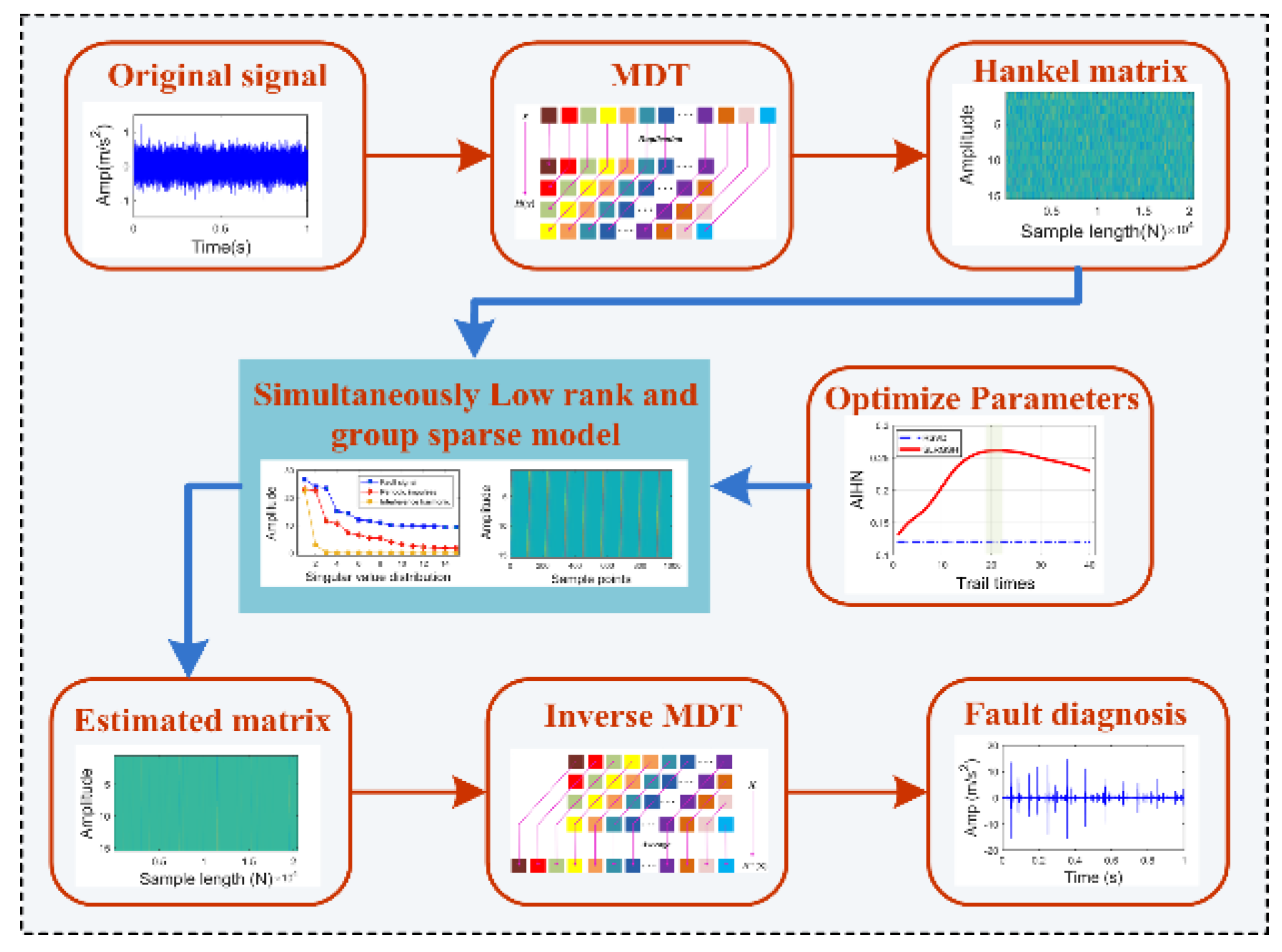


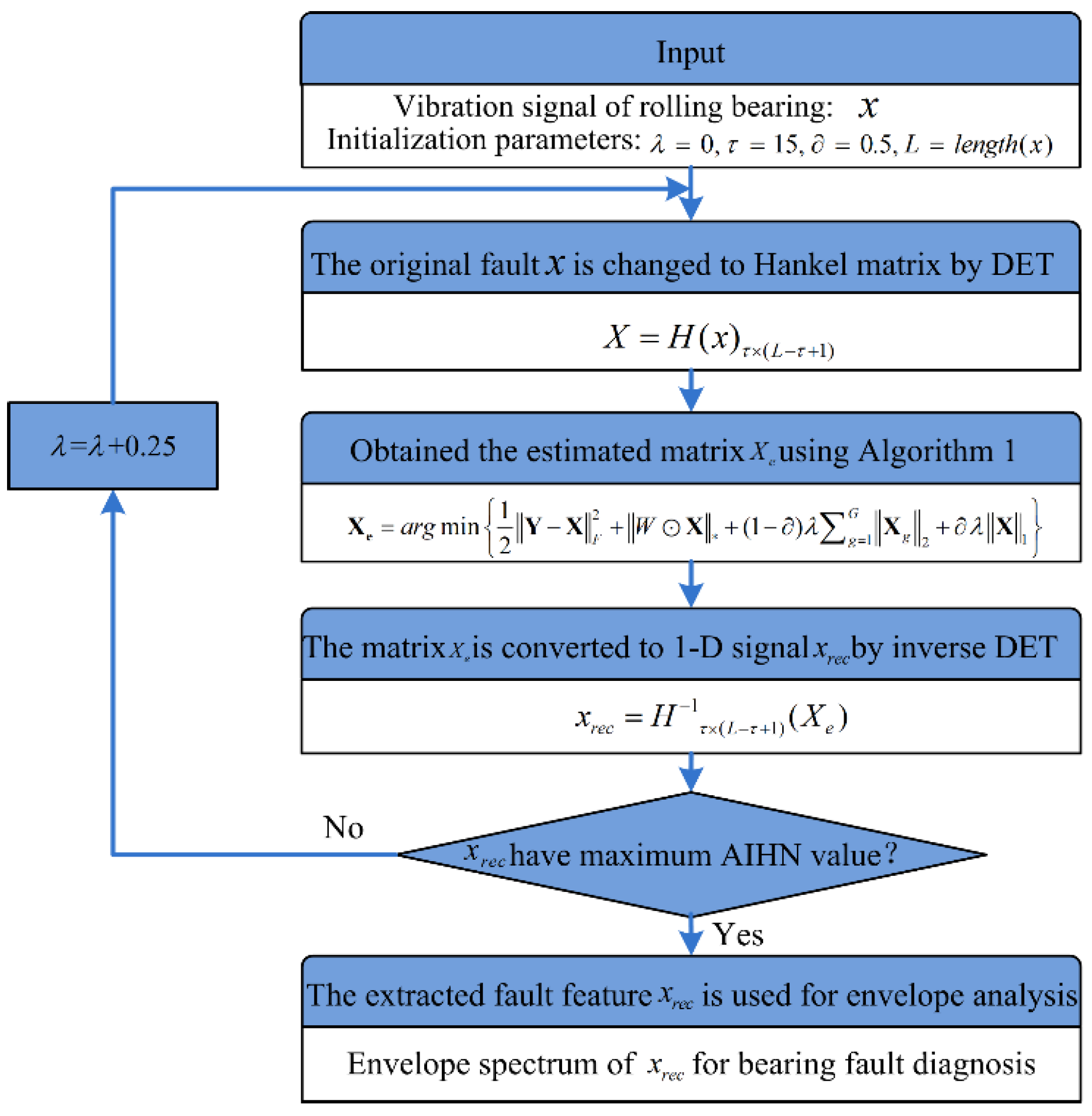
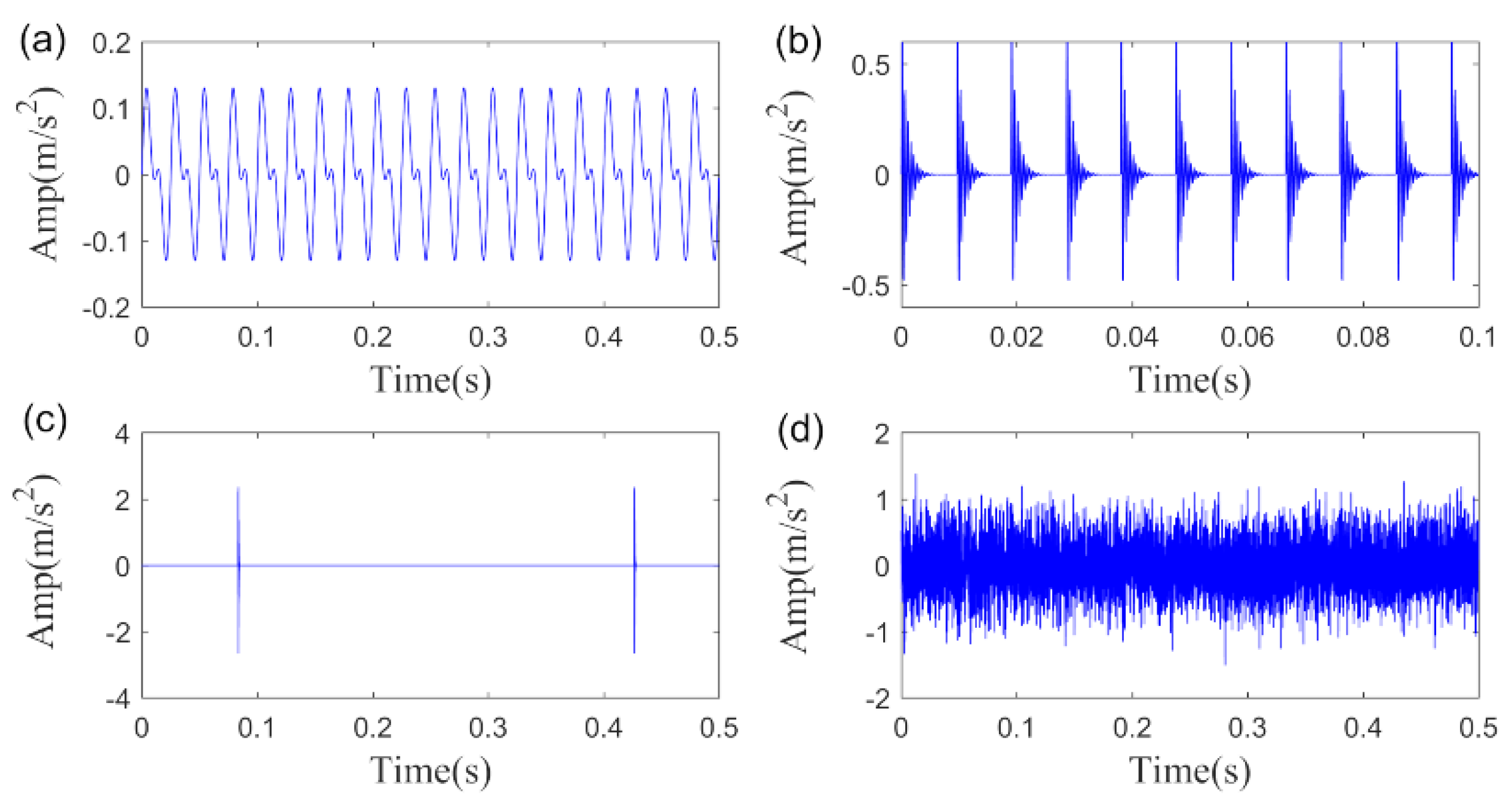

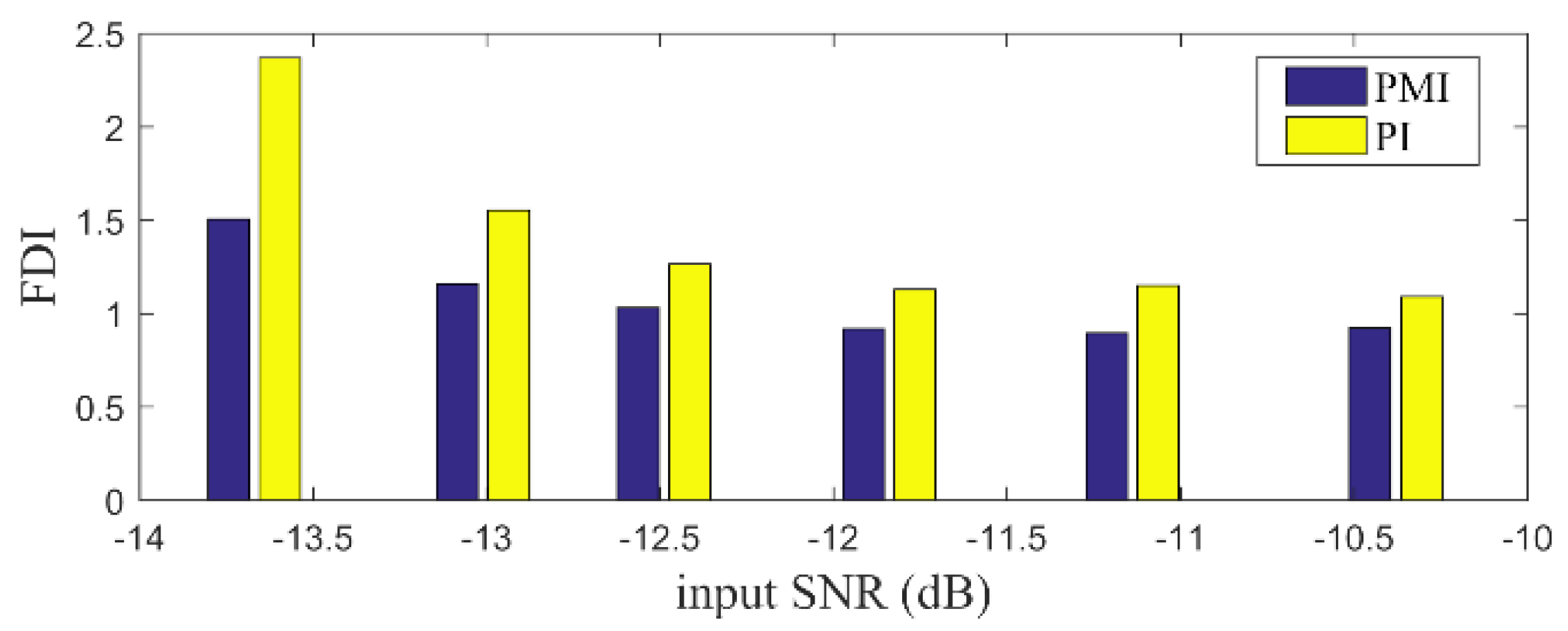

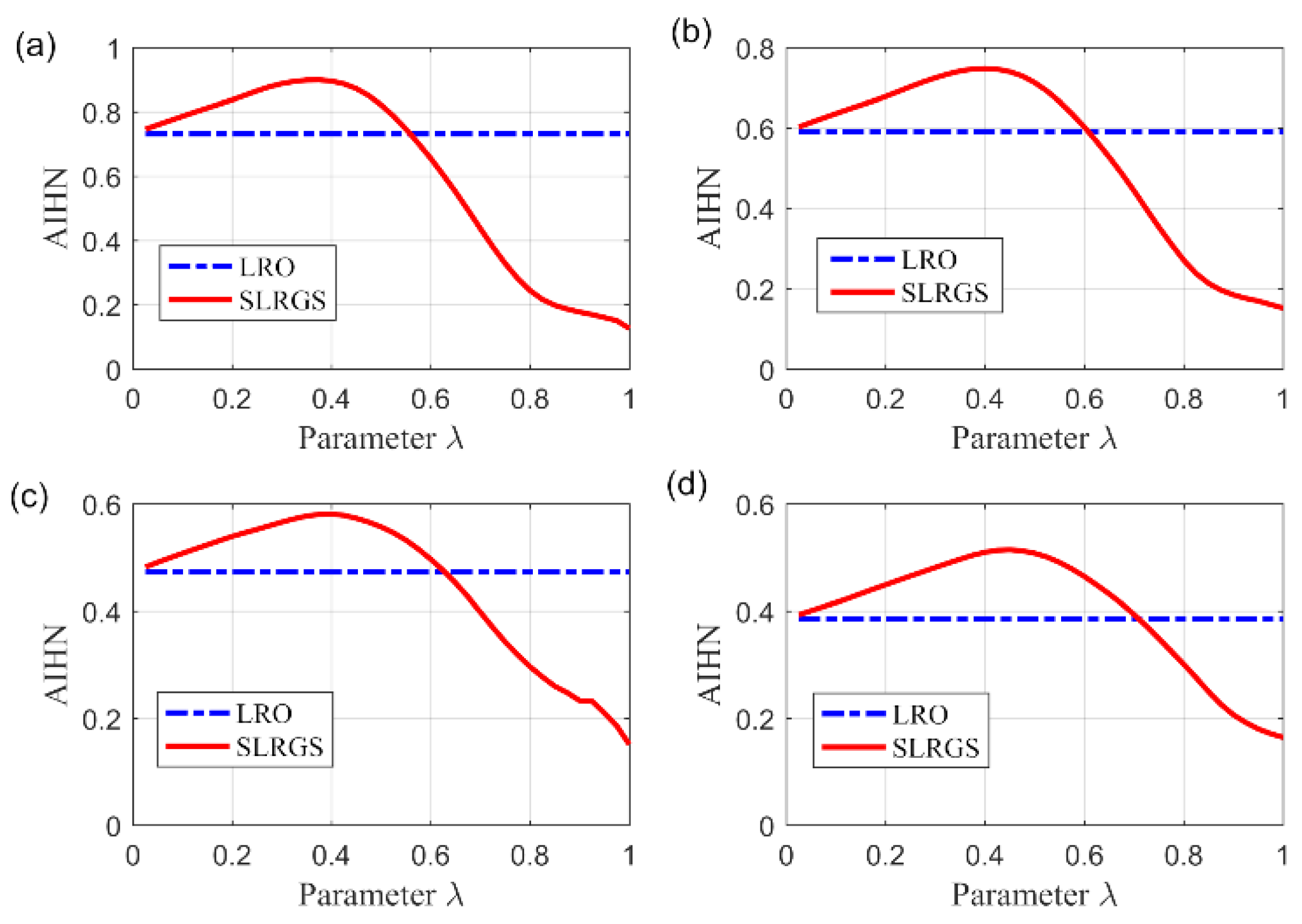



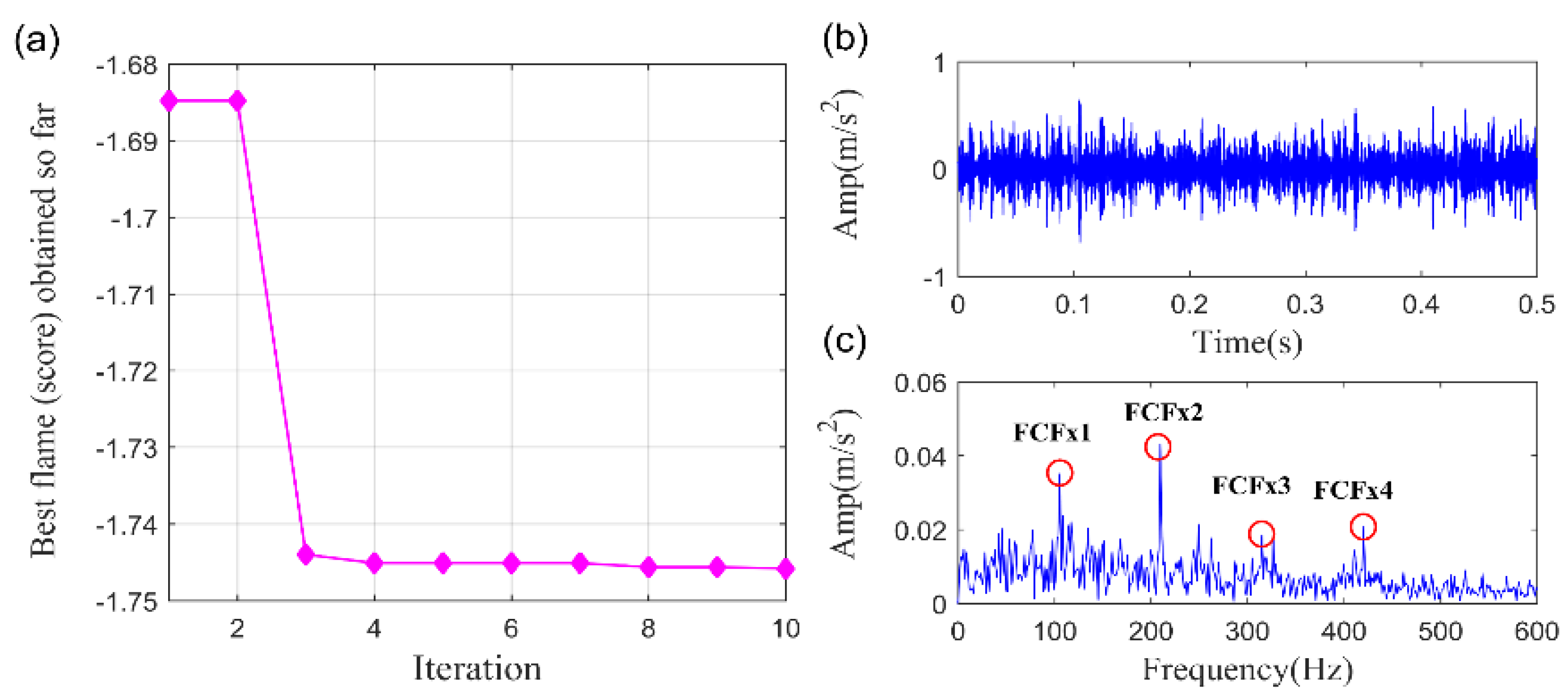

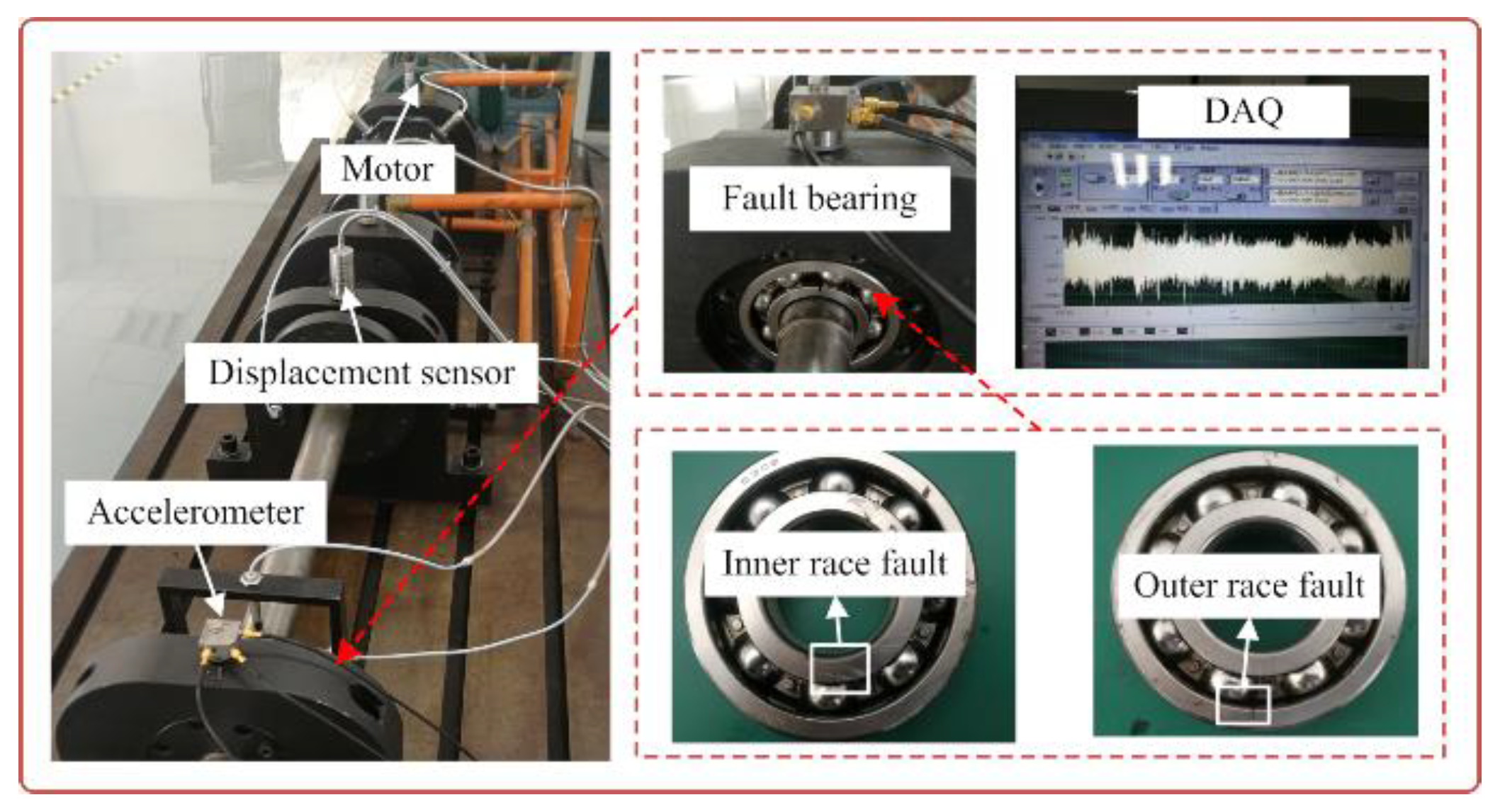

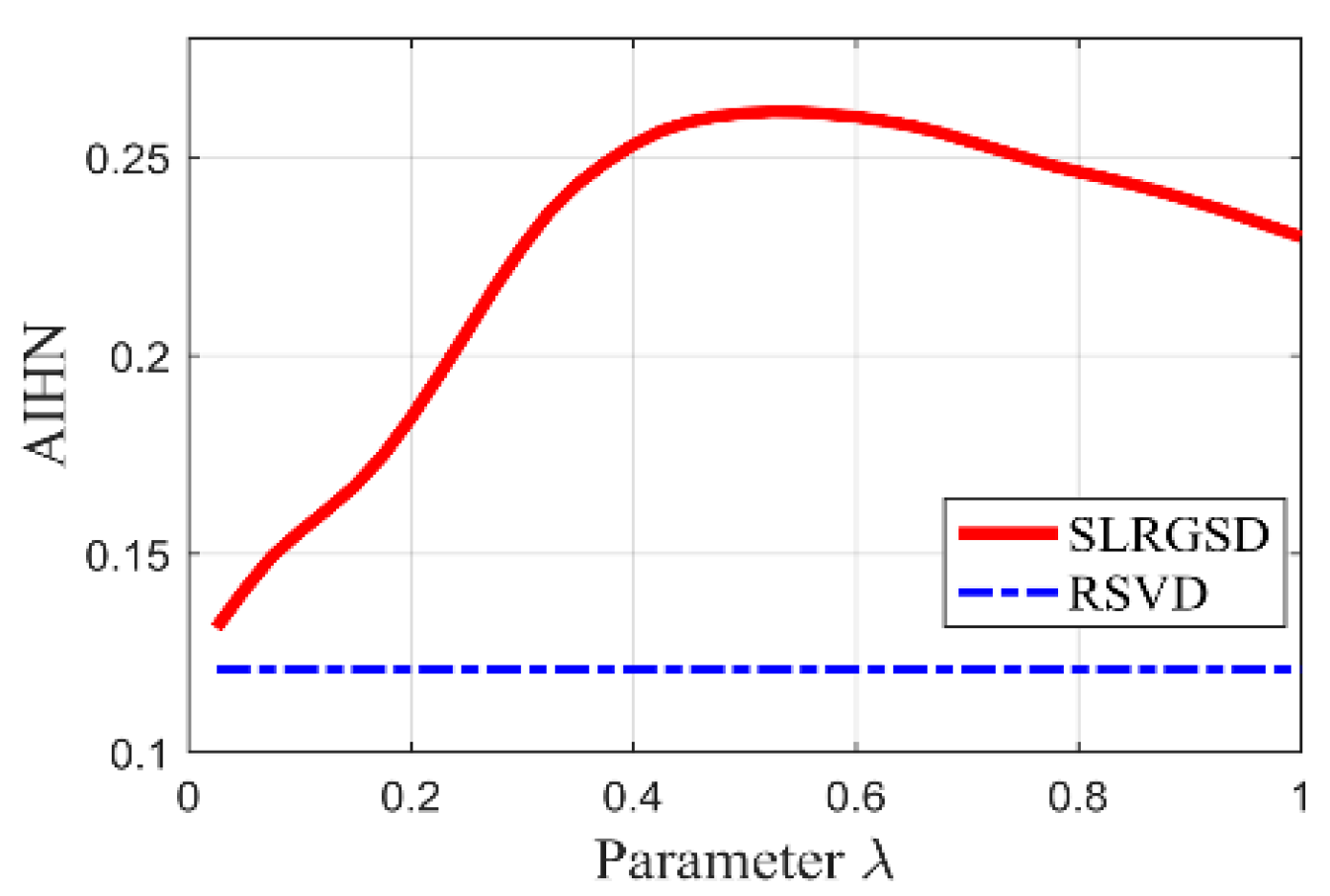







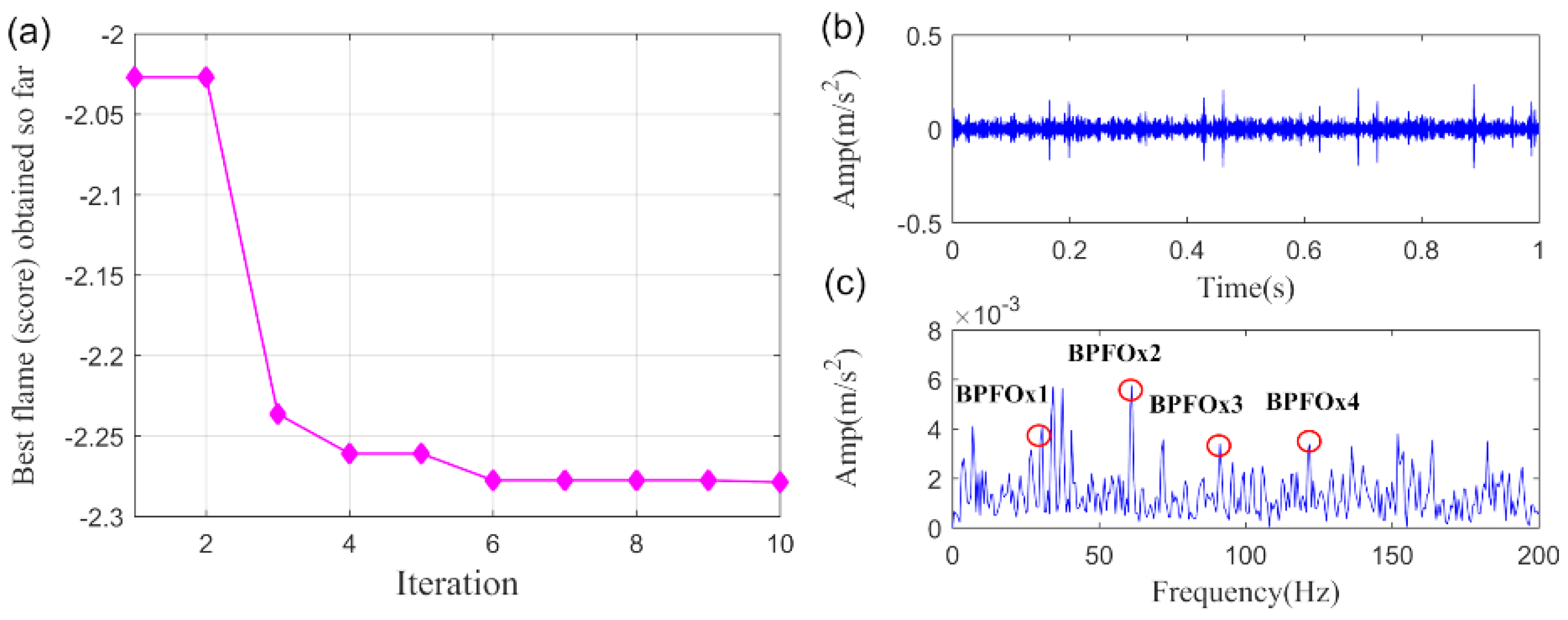
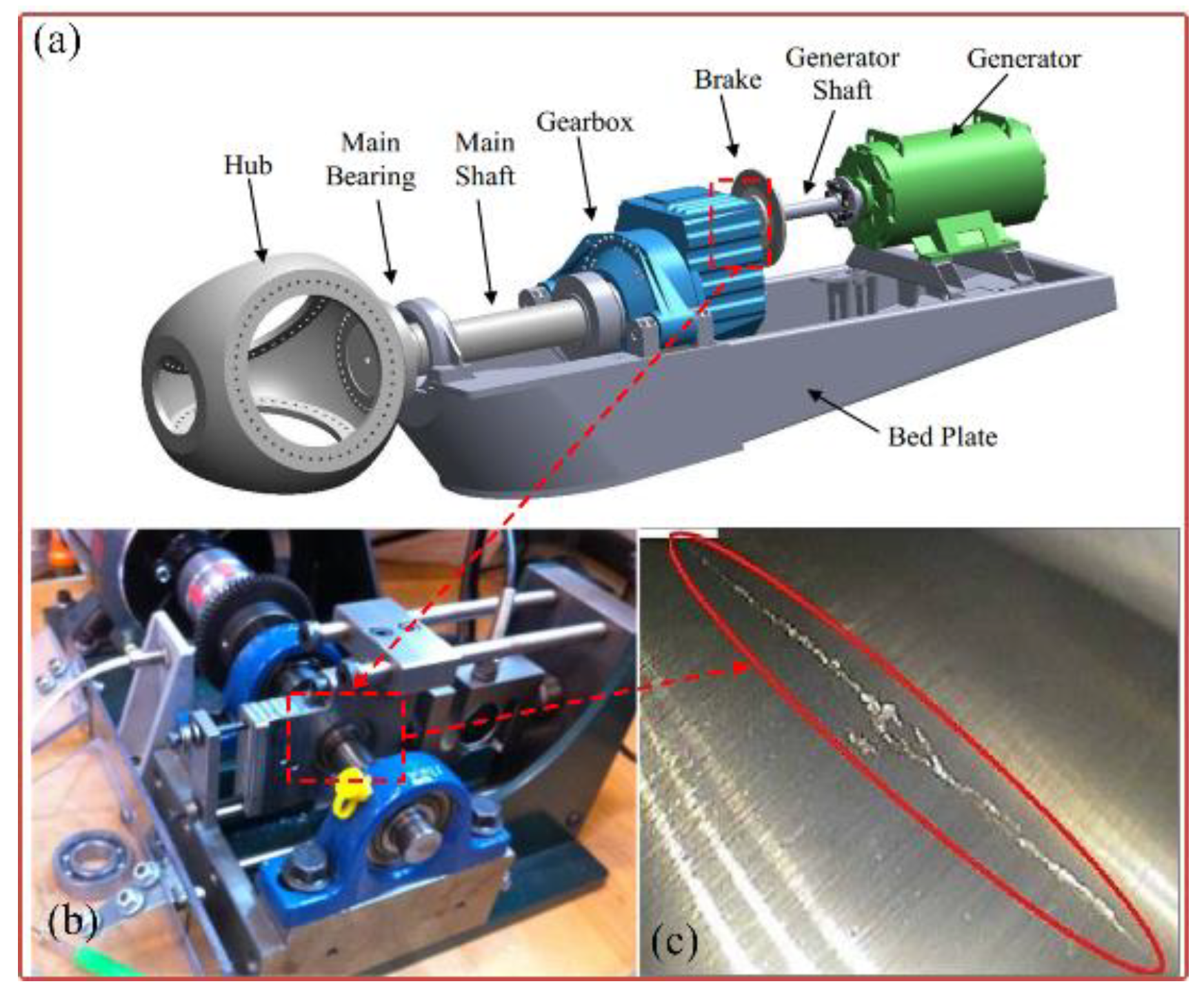

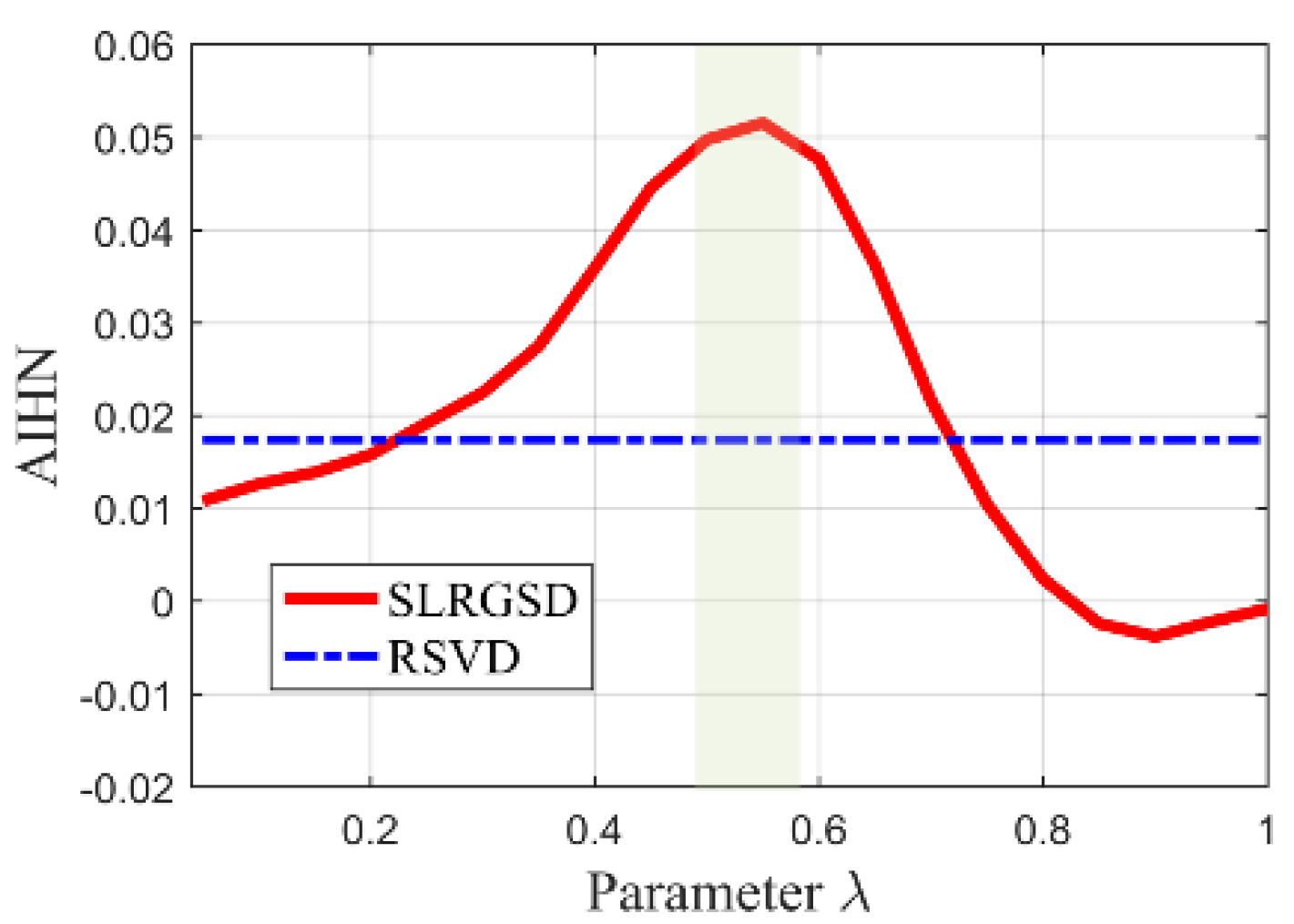


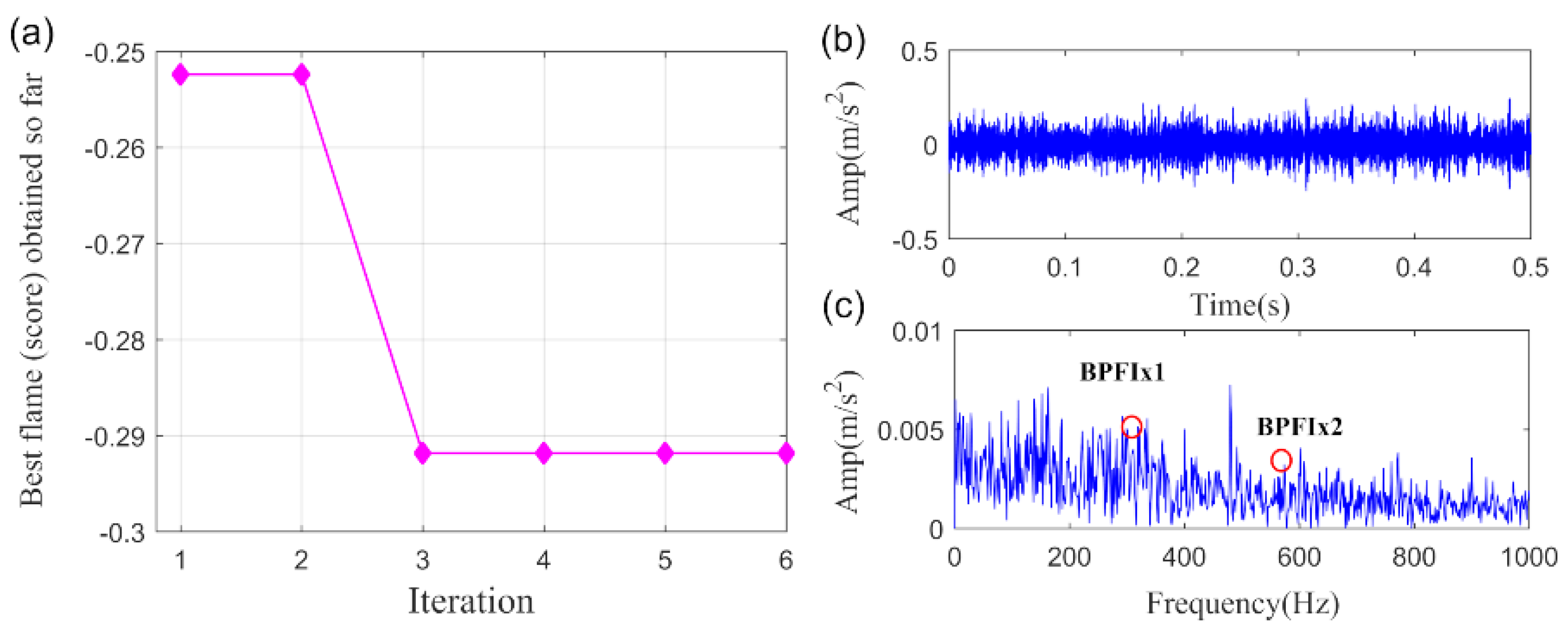
© 2020 by the authors. Licensee MDPI, Basel, Switzerland. This article is an open access article distributed under the terms and conditions of the Creative Commons Attribution (CC BY) license (http://creativecommons.org/licenses/by/4.0/).
Share and Cite
Zheng, K.; Bai, Y.; Xiong, J.; Tan, F.; Yang, D.; Zhang, Y. Simultaneously Low Rank and Group Sparse Decomposition for Rolling Bearing Fault Diagnosis. Sensors 2020, 20, 5541. https://doi.org/10.3390/s20195541
Zheng K, Bai Y, Xiong J, Tan F, Yang D, Zhang Y. Simultaneously Low Rank and Group Sparse Decomposition for Rolling Bearing Fault Diagnosis. Sensors. 2020; 20(19):5541. https://doi.org/10.3390/s20195541
Chicago/Turabian StyleZheng, Kai, Yin Bai, Jingfeng Xiong, Feng Tan, Dewei Yang, and Yi Zhang. 2020. "Simultaneously Low Rank and Group Sparse Decomposition for Rolling Bearing Fault Diagnosis" Sensors 20, no. 19: 5541. https://doi.org/10.3390/s20195541
APA StyleZheng, K., Bai, Y., Xiong, J., Tan, F., Yang, D., & Zhang, Y. (2020). Simultaneously Low Rank and Group Sparse Decomposition for Rolling Bearing Fault Diagnosis. Sensors, 20(19), 5541. https://doi.org/10.3390/s20195541




